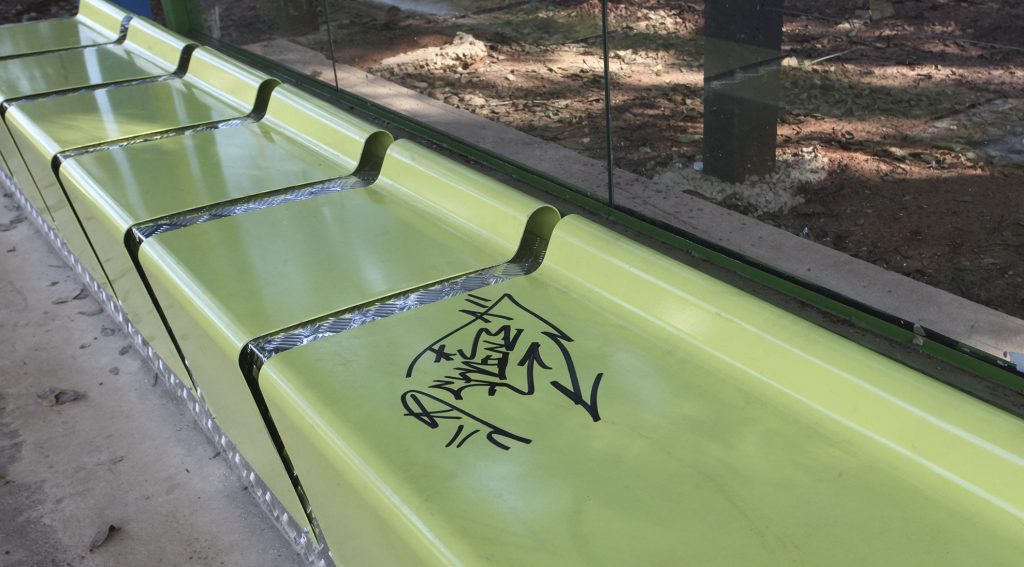Understanding “Pixados”: The Art, Culture, and Controversy

https://hunterposts.com/
some of them are really unique and aesthetically appealing, some others draw controversy, yet all of them convey a message. Pixados is a form of graffiti that has originated in Brazil; their work currently focuses on illustrating faces. Street art is said to be as old as civilization itself from some earlier work discovered to being as young as the declining four decade of this twentieth century, thus makes it an interesting area of study. This blog entry therefore looks at what pixados are, their background or origin, and their cultural significance or relevance, and finally some controversy related to pixados.
What Are Pixados?
Pixados or pichação or pixo, are a unique kind of graffiti which differs from the others in tiny, angular and more often than not nearly illegible writing. This form of the art piece is popular in the country and especially cities like São Paulo and Rio de Janeiro. While some types of graffiti concentrate on the depictions of murals and complicated designs, pixados are generally painted in black-and-white, with characters often depicted in detailed and rather aggressive lines.
The Origins of Pixados
Pixados traces its origin back to the 1980s at the time of the military junta in Brazil. Since this period was one of the dreariest of political oppression, pixação emerged as an act of statement and protest. Aliens of a new generation in the Federal Republic of Brazil, particularly those belonging to the less privileged neighborhoods, practiced pixação to register their disappointments with the government, increasing rate of inequality, and paucity of employment opportunities.
Political and Social Context
-
Dictatorship Era:
Due to the authoritarianism, was free speech in the socialist country so much restricted?. Pixadores painted their protests and claimed the city’s spaces on behalf of citizens and against its totalitarian architectures.
-
Economic Inequality:
Closely related to this factor is the fact that Brazil has one of the highest levels of economic inequality in the whole world with a significant part of society being extremely poor; this has also contributed to the emergence and the evolution of pixação.
Cultural Impact of Pixados
All in all, despite the sometimes uncomfortable reception their work has received, pixados have undeniably left a mark on the Brazilian art scene, and the international art scene more broadly. They are a part of the expression of the ‘street’ which represents the day to day struggle of the less privileged in society.
Urban Identity and Rebellion
-
Youth Subculture:
Pixação is explicitly related to the postmodern youth culture within megacities. It is not only a style in music and dance but it influences and embodies the lives of many youth in Brazil. Pixadores are those vibrant street artists from Rio de Janeiro that paint advertisements with wild abandon: pixadores possess the skill, the courage and the cartographic knowledge of the city.
The Controversy Surrounding Pixados
On the negative side, critics assert that pixação is a form of vandalism, which uglier the public and private property and thus accelerating the, decaying process of the environment and crime.
Vandalism vs. Art
-
Legal Implications:
Finally, there is an antagonistic relationship between pixadores and authorities because authorities fail to distinguish pixadores from mere vandals, meaning that they arrest pixadores different from arresting other people.
-
Public Opinion:
Since its appearance some consider it as the social blight and the symbol of the social chaos, while others believe that it is the freedom of artistic and political statement.
Efforts to Curb Pixação
-
Government Crackdowns:
Because of the increase in pixação, some city governments have cracked down on graffiti writing by legalizing most of the tactics used by pixadores and provided the police with more power to patrol places with much pixação.
-
Community Programs:
On the other hand, there are efforts in attempts to transform pixadores into being artisans of the images through redirecting their efforts towards the more acceptable type of arts. The authorities who approve different programs allowing certain building facades or placing graffiti in official buildings are all interested in curbing pixação while at the same time helping young artists unleash their artistic flair through art classes.
The established theory is followed when classesifying the phenomenon of Pixação in the global context Therefore, the introductory part of this paper is to demonstrate the global patterns of the identified phenomenon Furthermore, the global notion of Pixação is to be analyzed in the contexts of cultural, social,
International Influence
-
Street Art Movements:
Pixação has caused many street art movements in cities other than Brazil, making artists depict their awe towards pixação due to its daring nature and political vigor.
-
Art Exhibitions:
It has also gained formal acceptance on pixação as a modern art.
Global Recognition

-
Documentaries and Films:
These works have helped shape the wider view of pixação by making people more aware of the culture and different aspects of it.
Conclusion
However, one must still wonder: is pixação vandalism or a form of art? While it cannot be denied that pixação is still stirring controversy, it is also invigorating people to rethink about street art and the positive effectiveness in the cities.







